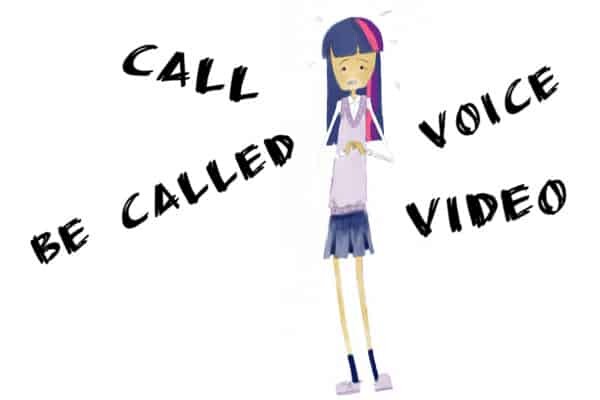One size fits all is passe. Time to find a best fit for MY needs.
I don’t know about you, but I do a lot of calls – voice and video ones – long distance – across time zones. Sometimes, I do them with WebRTC services, but other times, I use Skype or Google Hangouts. And these two services? I am now viewing them as broken. Broken to the way I want to use communications.
 And when things are broken, there’s opportunity for others to come in and fix it. While I am not sure how this feeling of mine affects others, I want to share it with you.
And when things are broken, there’s opportunity for others to come in and fix it. While I am not sure how this feeling of mine affects others, I want to share it with you.
How do you Skype?
It starts with an instant message. An innocent text. “Are you there?” “Ping me when you want to start” “Hi”.
And then a nagging question arises in my mind: is the other person comfortable with video? Should I try calling him with voice only? Will he be calling me or should I be the one pressing that green button?
If he called me with video, and I only accept voice but able to see him – how would he be interpreting it?
There’s too much anxiety and worry involved with a Skype call.
What if I want to Hangout only with voice?
Chris Kranky, my pal and partner in crime? Now that we’re planning our event in June, there’s a lot of syncing to do. And for some reason, we both communicate over Hangouts. Nothing personal towards Skype. Or the fact that we write about WebRTC. It just happens to be there when I need it, and easily reachable.
Chris just relocated from Hong Kong to San Francisco, which means having a significant time difference with me (I am in Israel – somewhat in the middle between these two points). But you know what? For the type of calls we have – I don’t need video. Sure, it’s nice to see him for a minute or two, exchange smiles and talking about the hour of the day instead of the weather. But once we go into brain storming or syncing mode, I actually roll my chair around – showing my back to the laptop – close my eyes – and talk. This is what I need to concentrate in this specific case.
So I don’t really need or want Chris to see me. And he is also complaining about that default video mode that Hangouts seems to love.
The anxiety here? Do you start a video hangout and immediately mute the video? Would the other participant do the same, or be offended? If I stay with video and the other participant(s) mute their video – do I follow suite or continue the call and feel dumb?
Why is this important?
Different services tend to have different flows in mind. These flows won’t work for everyone and they won’t work for the same person for all of his communication needs either. These cracks left by the likes of Skype and Hangouts? They can be exploited by those looking to focus on specific use cases – to fill a specific need.
WebRTC removes the barrier of entry for new startups, which makes it possible to cater for these niche needs.
Oh, and if the need is also wrapped around a context that can be monetized – even better.

Tsahi,
What you are rightfully talking about is to my opinion a usability and educational challenge. There is no doubt in video communication requires new learnings on user and service provider (developer) side. And I fully agree on your behavioural comments, thus – there is no right or wrong, no way to fix to contextual dependencies easily. So with WebRTC the place for better experiences is opened, I am sure we will see more coming.
Holger,
I disagree. Video requires no new learning. They say the same about UC, but if you think about it, best UC solutions today are the consumer messaging apps – Whatsapp, LINE, etc. These come with no user guides or training and attract hunderds of millions of users successfully.
Someone needs to find a way to achieve that for video communications – to better engage the users in a way that is comfortable and easy.
People are different, I still remember how ICQ improved communications for me – I had no need to call someone by phone and talk with him, and could just write him what I want and receive an answer. On the other sid, I know people who call you back right after receiving chat message, because it is natural for them.
So actually current communications for different people are broken in diferent ways – for me, Skype is broken because of lack of chat history on server, and for someone – because it allows to switch off the video at all.
So yes, common communication core with independent developers would be great to improve communications for everyone.. Problem is, WebRTC does not define signalling, and this is mainly signalling question. In signalling we are stuck with “telephony/cellular” global network – outdated and with payment per every transferred byte – and Jabber/XMPP, recently backstabbed by Google.